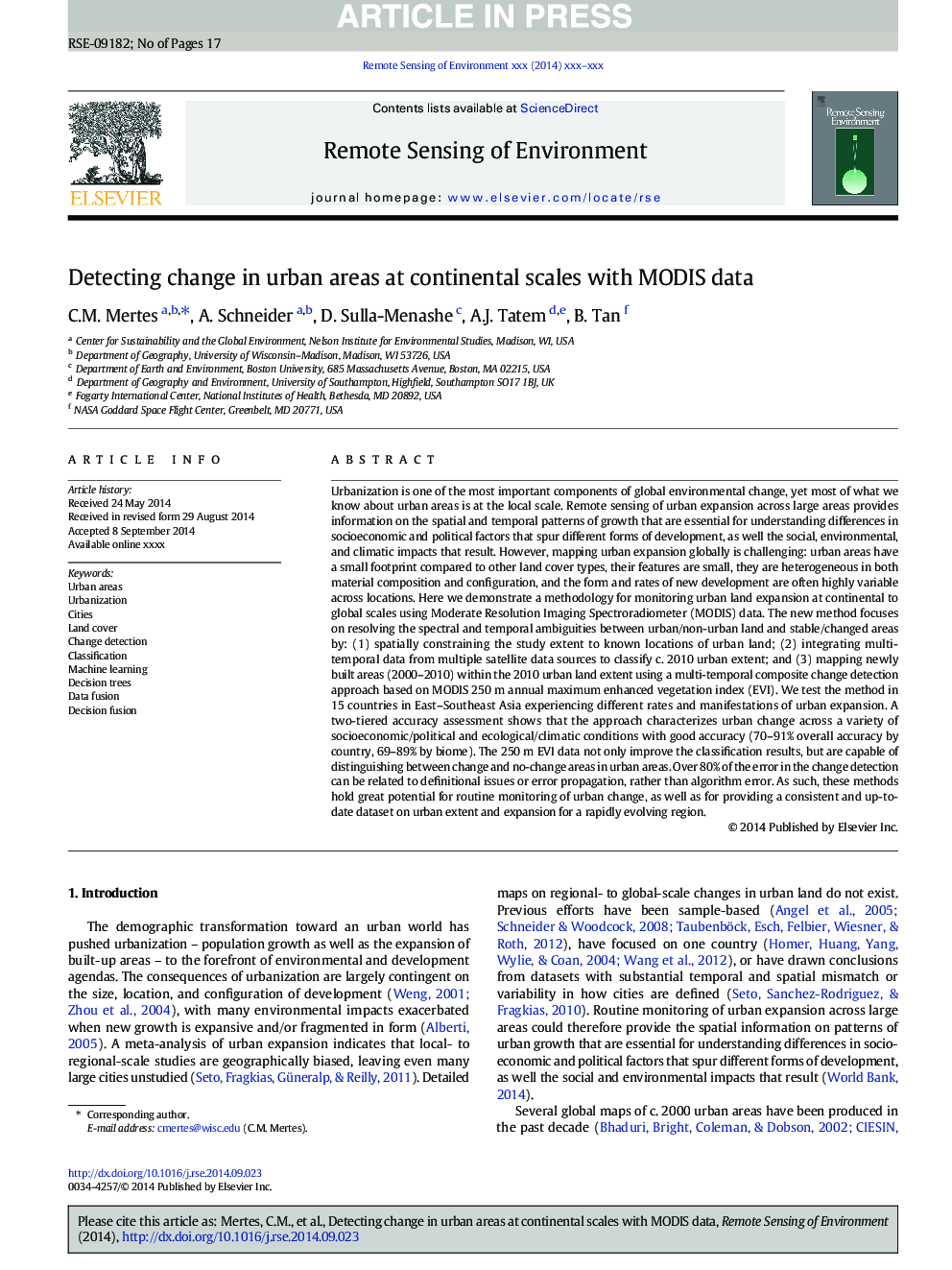| کد مقاله | کد نشریه | سال انتشار | مقاله انگلیسی | نسخه تمام متن |
|---|---|---|---|---|
| 6346258 | 1621242 | 2015 | 17 صفحه PDF | دانلود رایگان |
عنوان انگلیسی مقاله ISI
Detecting change in urban areas at continental scales with MODIS data
دانلود مقاله + سفارش ترجمه
دانلود مقاله ISI انگلیسی
رایگان برای ایرانیان
کلمات کلیدی
موضوعات مرتبط
مهندسی و علوم پایه
علوم زمین و سیارات
کامپیوتر در علوم زمین
پیش نمایش صفحه اول مقاله

چکیده انگلیسی
Urbanization is one of the most important components of global environmental change, yet most of what we know about urban areas is at the local scale. Remote sensing of urban expansion across large areas provides information on the spatial and temporal patterns of growth that are essential for understanding differences in socioeconomic and political factors that spur different forms of development, as well the social, environmental, and climatic impacts that result. However, mapping urban expansion globally is challenging: urban areas have a small footprint compared to other land cover types, their features are small, they are heterogeneous in both material composition and configuration, and the form and rates of new development are often highly variable across locations. Here we demonstrate a methodology for monitoring urban land expansion at continental to global scales using Moderate Resolution Imaging Spectroradiometer (MODIS) data. The new method focuses on resolving the spectral and temporal ambiguities between urban/non-urban land and stable/changed areas by: (1) spatially constraining the study extent to known locations of urban land; (2) integrating multi-temporal data from multiple satellite data sources to classify c. 2010 urban extent; and (3) mapping newly built areas (2000-2010) within the 2010 urban land extent using a multi-temporal composite change detection approach based on MODIS 250Â m annual maximum enhanced vegetation index (EVI). We test the method in 15 countries in East-Southeast Asia experiencing different rates and manifestations of urban expansion. A two-tiered accuracy assessment shows that the approach characterizes urban change across a variety of socioeconomic/political and ecological/climatic conditions with good accuracy (70-91% overall accuracy by country, 69-89% by biome). The 250Â m EVI data not only improve the classification results, but are capable of distinguishing between change and no-change areas in urban areas. Over 80% of the error in the change detection can be related to definitional issues or error propagation, rather than algorithm error. As such, these methods hold great potential for routine monitoring of urban change, as well as for providing a consistent and up-to-date dataset on urban extent and expansion for a rapidly evolving region.
ناشر
Database: Elsevier - ScienceDirect (ساینس دایرکت)
Journal: Remote Sensing of Environment - Volume 158, 1 March 2015, Pages 331-347
Journal: Remote Sensing of Environment - Volume 158, 1 March 2015, Pages 331-347
نویسندگان
C.M. Mertes, A. Schneider, D. Sulla-Menashe, A.J. Tatem, B. Tan,